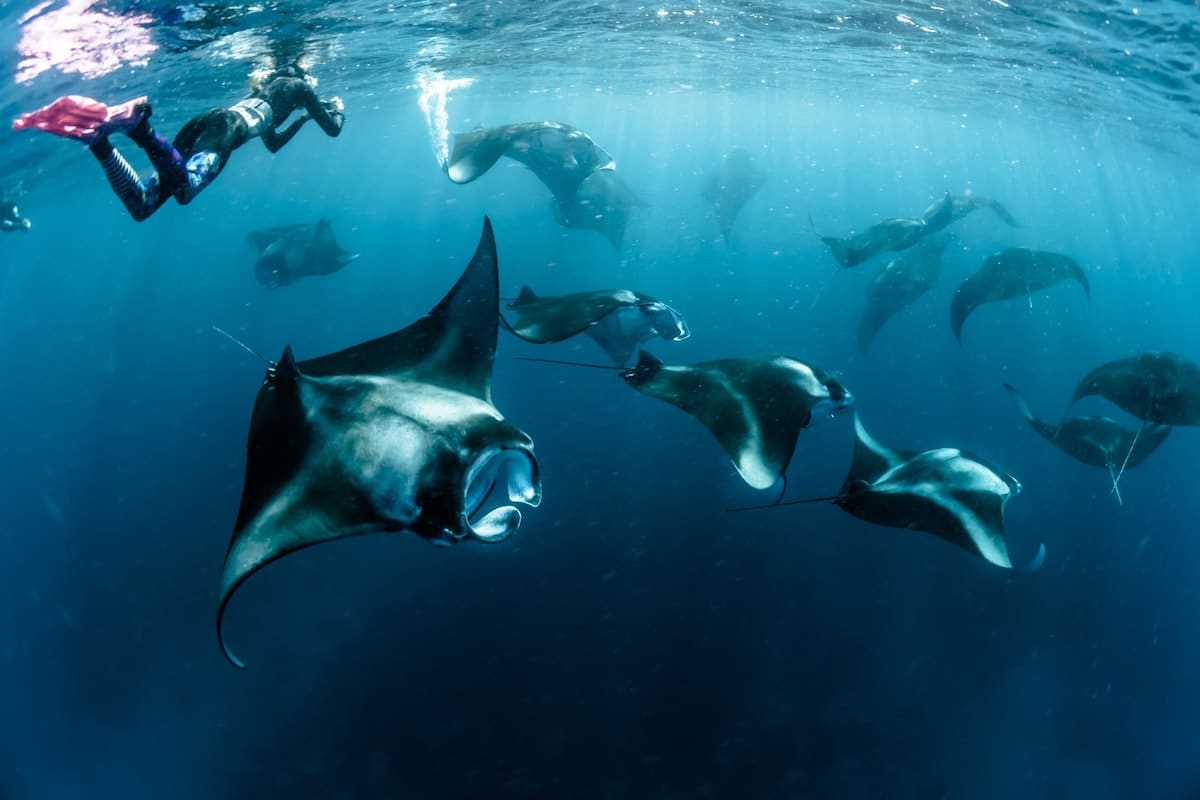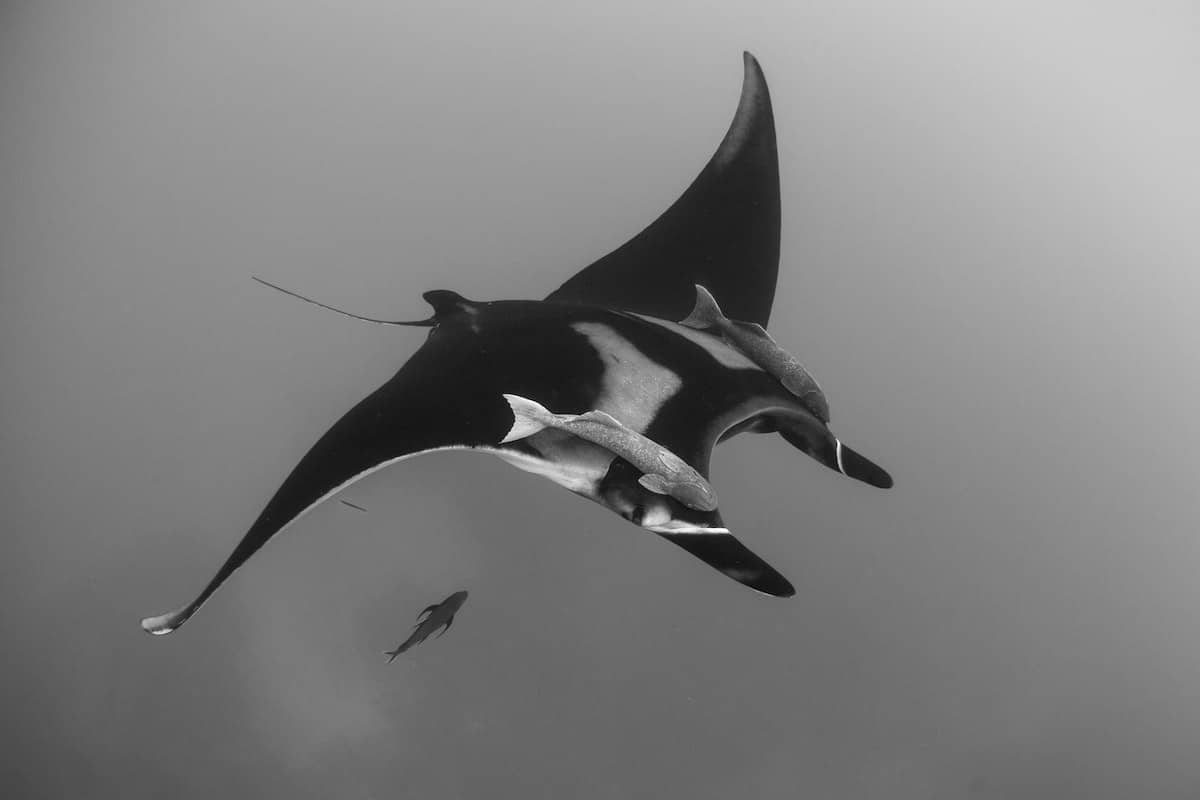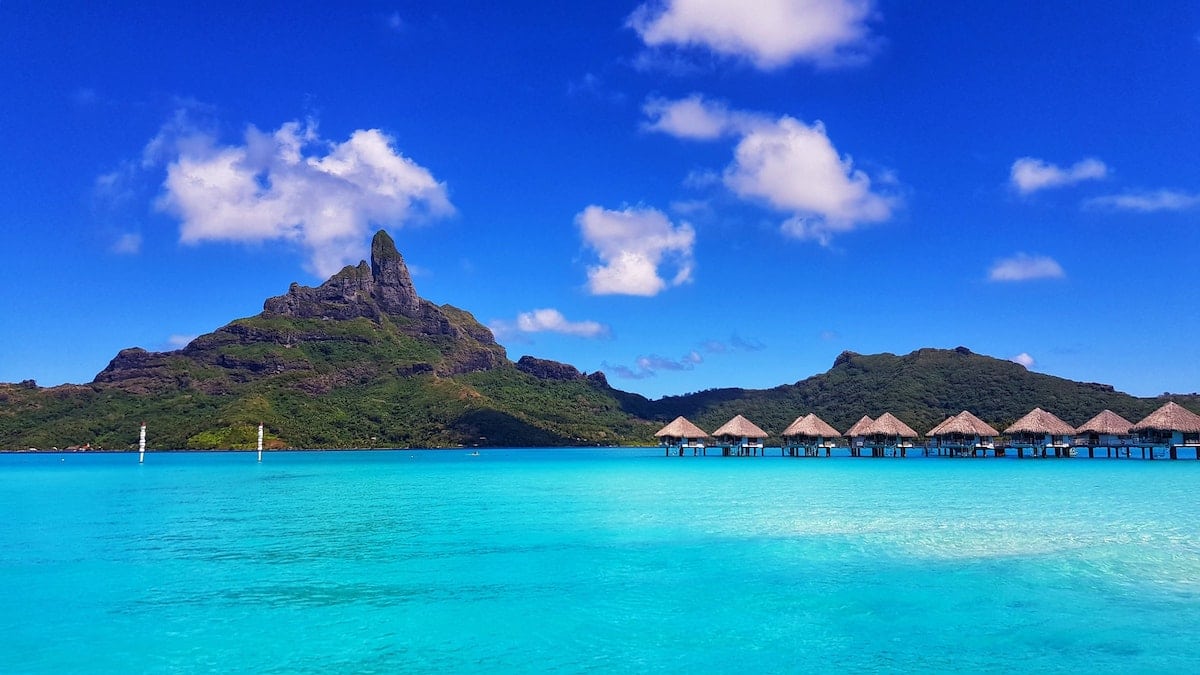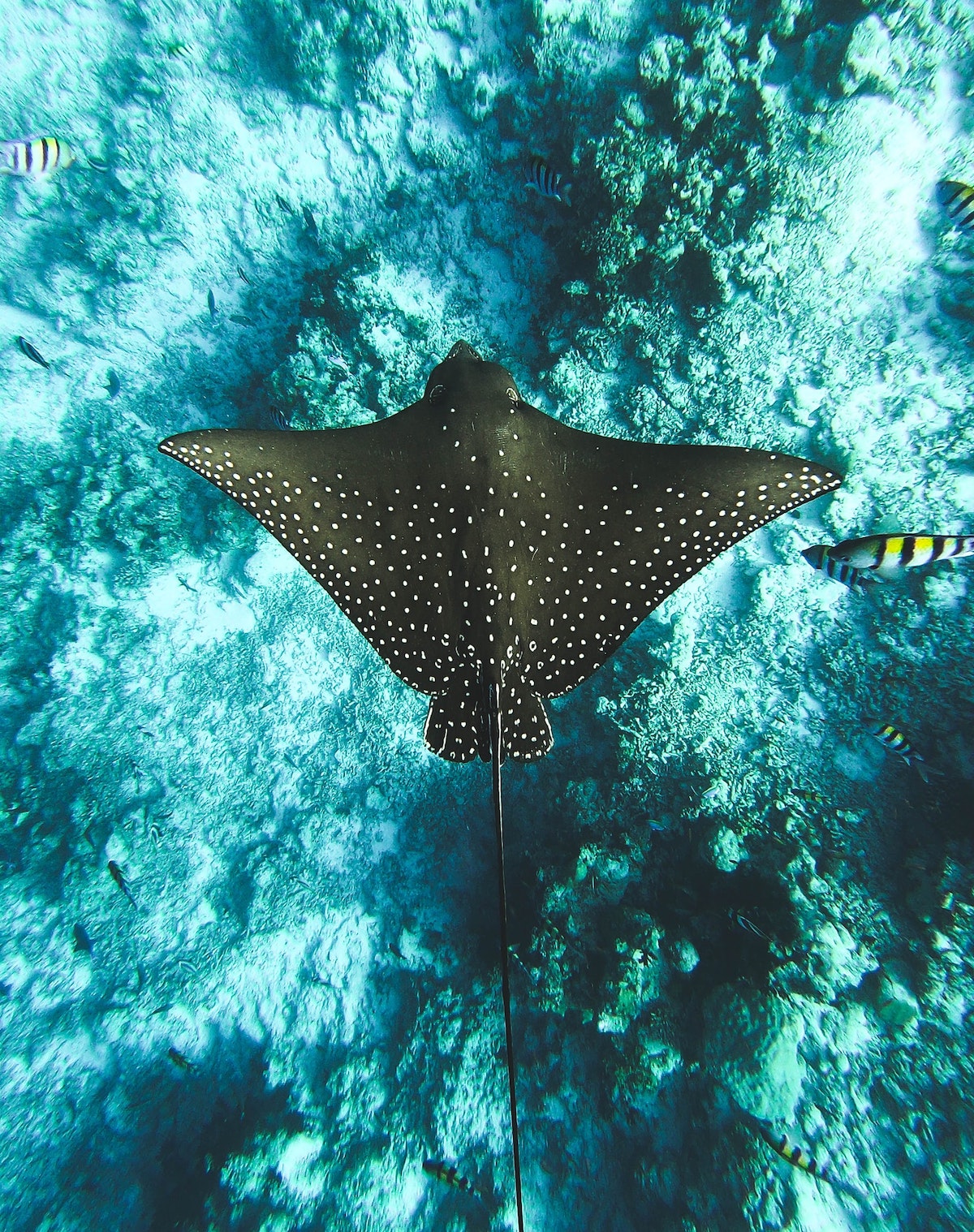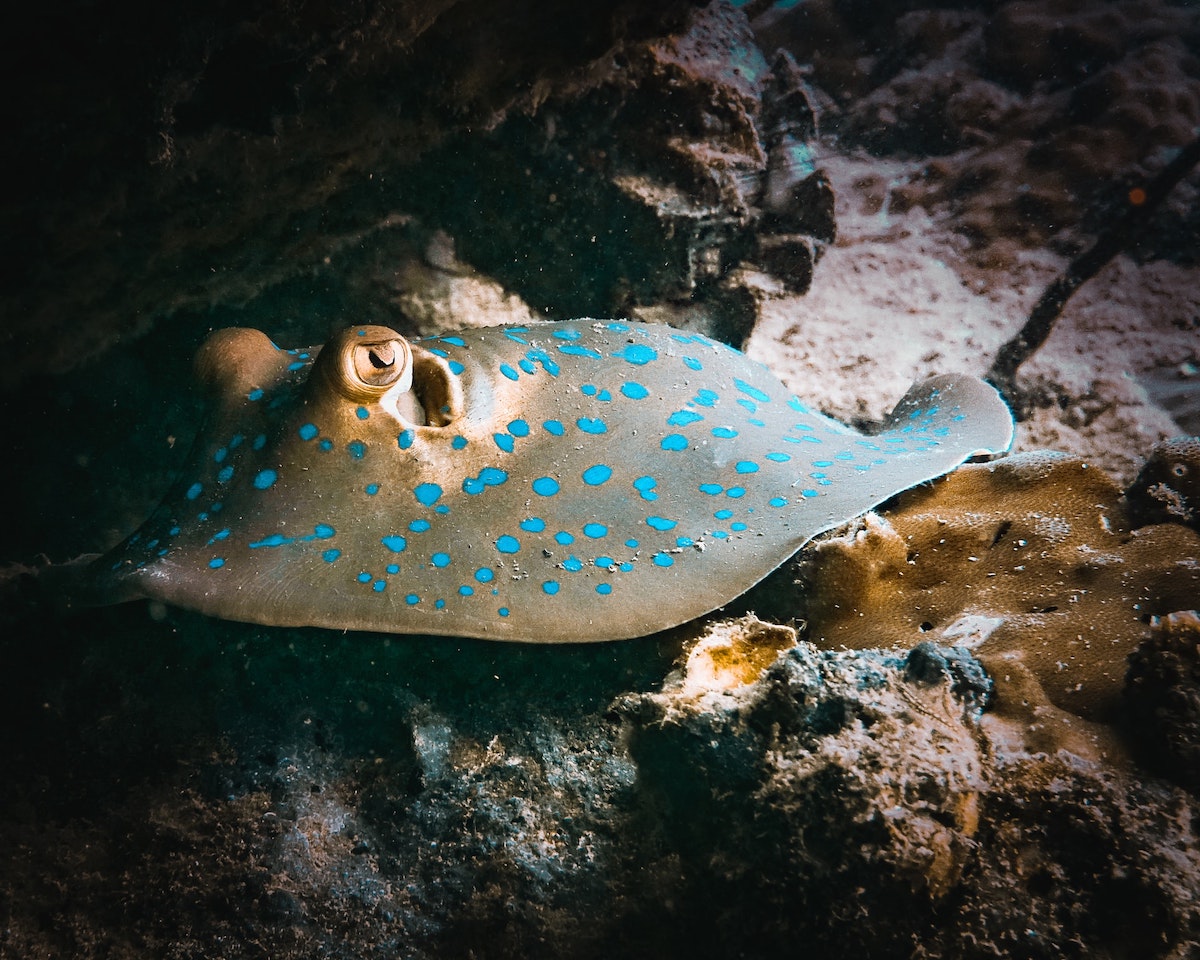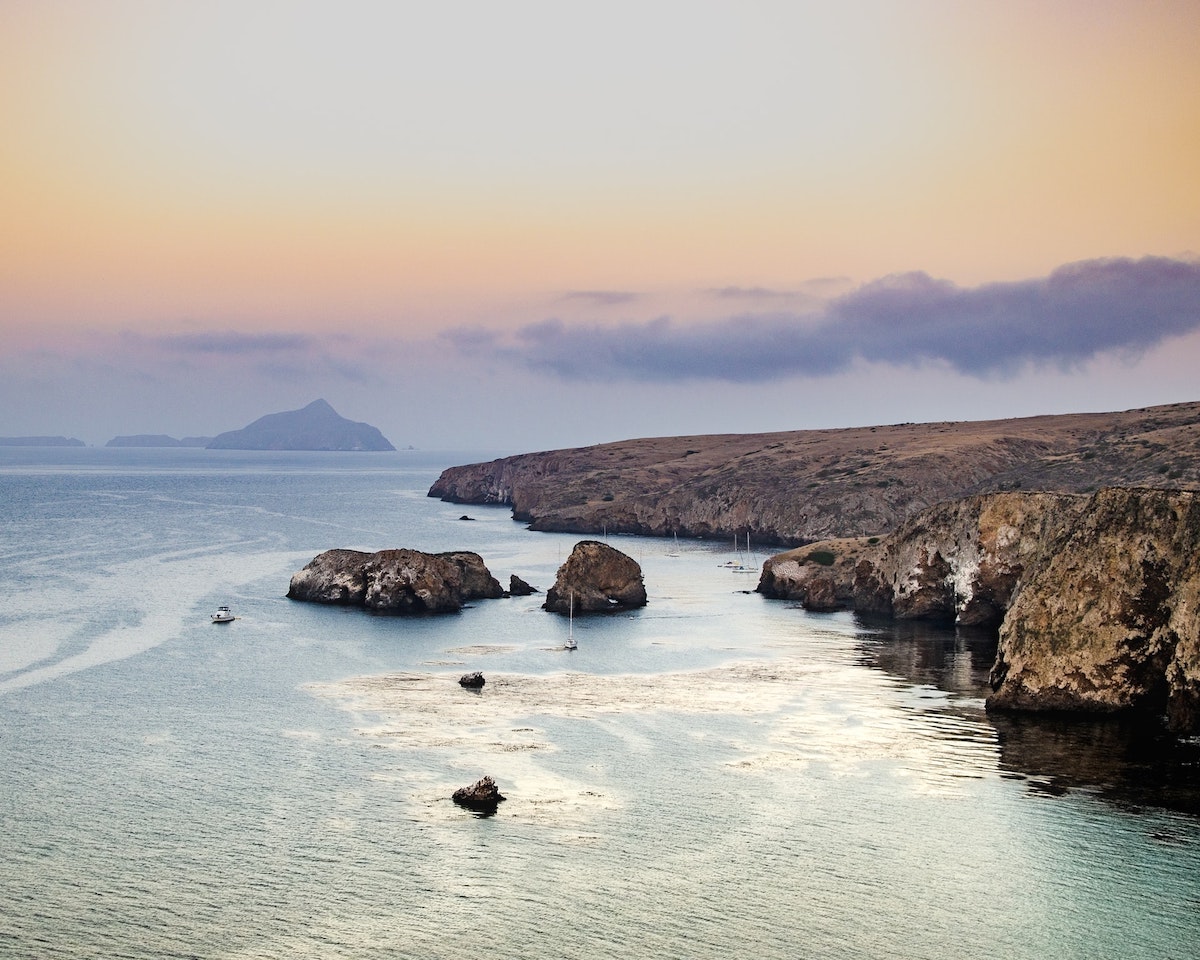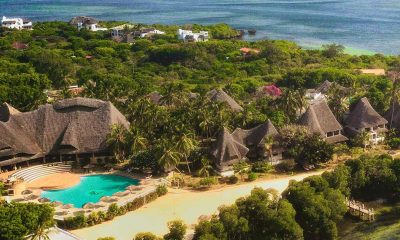Marine Life & Conservation Blogs
Top 20 places to go snorkeling with rays

The world’s oceans are home to over 500 different ray species of all shapes and sizes. These close cousins to sharks are mesmerizing to swim with and leave a lasting impression upon anyone who swims with them. Whether you want to snorkel with huge mantas, spotted eagle rays, friendly stingrays or thousands of mobulas, you can. Read on to find out more.
Reef manta rays
- Hanifaru Bay, Maldives
One of the most famous manta ray destinations of all, Hanifaru Bay is simply incredible. This UNESCO Biosphere Reserve hosts hundreds of feeding mantas from May to November each year and you can go snorkeling with them.
- Kona, Hawaii
Kona in Hawaii is one of the only places in the world where you go can night snorkeling (or night diving) with reef mantas. Lit up by the beam of you torch, you can watch the mantas feeding right in front of you. It is one of the best-loved highlights of any Kona scuba diving trip.
- Lady Elliot Island, Australia
Lady Elliot Island, known as the ‘home of the manta ray’, is a gorgeous island in the southernmost reaches of the Great Barrier Reef. It hosts manta rays year-round and offers snorkeling safaris to swim with mantas and explore the island’s coral reefs.
- Barefoot Manta Island, Fiji
Sitting just south of the Yasawa Islands, Barefoot Manta Island is renowned for its manta ray encounters and has some of Fiji’s best coral gardens. You can swim with mantas there for May to October each year.
Oceanic manta rays
- Komodo, Indonesia – manta point (both reef and giant)
The Komodo National Park in Indonesia hosts both reef and giant mantas, which you can snorkel with at Manta Point. As well as mantas, Komodo has some of the world’s most diverse coral reefs and an endless list of incredible marine life to swim with.
- Mozambique (both reef and giant) – Tofo
Like Komodo, Mozambique’s waters are frequented by reef and giant mantas. These graceful rays visit Mozambique’s cleaning stations in numbers, where you can dive or snorkel with them. Tofo Beach in Mozambique is a great place to go snorkeling with both manta rays and whale sharks.
Stingrays
- New Zealand
If you want to combine topside adventure activities with world-class subtropical snorkeling, visit New Zealand. The famous Poor Knights Islands are rated as one of the top 10 dive experiences in the world and offer snorkeling with huge stingrays and countless schooling fish.
- Stingray City, Cayman Islands
Stingray City is one of the world’s top places for snorkeling with stingrays. The calm clear waters of this lagoon host dozens of stingrays, which cruise along the white sand landscapes and are tolerant of people in the water.
- Moorea, French Polynesia
Moorea Lagoon in French Polynesia is known for its friendly stingrays. This idyllic lagoon also hosts reef sharks, and you can go swimming with humpback whales further offshore.
- Shark Ray Alley, Belize
The Hol Chan Marine Reserve has some of the best Belize diving and snorkeling opportunities. At Shark Ray Alley, you will find beautiful coral formations, plus numerous stingrays, nurse sharks and sea turtles.
- Egypt’s Red Sea
Egypt is a classic and affordable destination for snorkelers and divers alike, offering vibrant coral reefs busy with gorgeous blue spotted stingrays.
Spotted eagle rays
- French Polynesia
Bora Bora Lagoon and Moorea Lagoon in French Polynesia host plenty of spotted eagle rays, as does Fakarava Atoll, a UNESCO Biosphere Reserve. This is one of the most romantic and beautiful destinations you will likely ever find.
- Egypt’s Red Sea
As well as hosting blue spotted stingrays in abundance, Egypt’s many house and offshore reefs also host spotted eagle rays. Simply grab your snorkel, walk off the beaches and start exploring.
- Félicité Island, Seychelles
The channel at Félicité Island hosts eagle rays year-round and is a gorgeous place to go snorkeling. If you don’t have any luck finding eagle rays there, the surround islands are some of the best places for spotting eagle rays in the Indian Ocean.
Guitarfish
- La Jolla Cove, USA
Shovelnose guitarfish are strange-looking rays that also look a bit like sharks. These curious creatures can be found among the rich kelp forests of La Jolla Cove in California, where you can also spot leopard sharks and sea lions.
- The Maldives
Bowmouth guitarfish are a type of ray found at the Maldives. Although they are not commonly seen, keep your eyes out for them whilst snorkeling there. Even if you don’t see a guitarfish, you’ll be exploring one of the best snorkeling destinations in the world.
- Ningaloo Reef, Australia
Ningaloo Reef in Western Australia is visited by an array of ocean giants, including whale sharks, humpback whales, mantas, dugong and more. There, you can also find Guitara the giant guitarfish. Much loved by locals, Guitara is comfortable with people in the water and comes over to check divers out.
Electric rays
- Egypt’s Red Sea
In case you need another reason to go snorkeling in Egypt, the rich waters there host adorable-looking leopard torpedo rays. These small and round electric rays are often spotted wriggling across the reefs as they go about their business.
- Channel Islands, USA
Pacific electric rays are only found in the coastal waters of the northeastern Pacific Ocean. You can find them at rocky reefs and kelp forests from Baja California up to British Columbia, though the Channel Islands are one of the best places to encounter them.
Mobula rays
- Baja California, Mexico
Last but by no means least, the Sea of Cortez is one of the best places to go Mexico diving and is renowned for its snorkeling with rays. This incredible destination hosts tens of thousands of mobula rays each year, which gather in huge groups to feed. Go snorkeling at Baja California to witness this true spectacle of nature.
Kathryn Curzon, a shark conservationist and dive travel writer for Scuba Schools International (SSI), wrote this article.
Blogs
The Ocean Cleanup Breaks 10,000,000 KG Barrier

The Ocean Cleanup, the global non-profit project, has removed a verified all-time total of ten million kilograms (22 million lbs.) of trash from oceans and rivers around the world – approximately the same weight as the Eiffel Tower.
To complete its mission of ridding the oceans of plastic, The Ocean Cleanup uses a dual strategy: cleaning up the Great Pacific Garbage Patch (GPGP) to remove the plastic already afloat in the oceans, while stopping the flow of plastic from the world’s most polluting rivers.
Through cleaning operations in the GPGP and in rivers in eight countries, the cumulative total of trash removed has now surpassed ten million kilograms. This milestone demonstrates the acceleration of The Ocean Cleanup’s impact, while underlining the astonishing scale of the plastic pollution problem and the need for continued support and action.
While encouraging for the mission, this milestone is only a staging point: millions more tons of plastic still pollute our oceans and The Ocean Cleanup intends to continue learning, improving and innovating to solve this global catastrophe.
This announcement comes as governments from around the world meet to continue negotiations to develop a new legally binding instrument to end plastic pollution at INC4 in Ottawa, Canada. Representatives of The Ocean Cleanup will be in attendance and the organization will be urging decision-makers to collaborate towards a comprehensive and ambitious global treaty which addresses plastic at all stages of its life cycle and in all marine environments worldwide, including in areas beyond national jurisdiction.
It is encouraging to see that the need for remediation is reflected in the various options for potential treaty provisions. It is essential that the final treaty contains clear targets for the remediation of legacy plastic pollution, and reduction of riverine plastic emissions.
Tackling plastic pollution requires innovative and impactful solutions. The treaty should therefore incentivize the innovation ecosystem by fostering innovations that make maximal use of data, technology and scientific knowledge – such as those designed and deployed by The Ocean Cleanup.
‘After many tough years of trial and error, it’s amazing to see our work is starting to pay off – and I am proud of the team who has brought us to this point.’ said Boyan Slat, Founder and CEO of The Ocean Cleanup. ‘While we still have a long way to go, our recent successes fill us with renewed confidence that the oceans can be cleaned.’
The Ocean Cleanup was founded in 2013 and captured its first plastic in 2019, with the first confirmed catch in the GPGP coming soon after the deployment of Interceptor 001 in Jakarta, Indonesia. After surpassing one million kilograms of trash removed in early 2022, the non-profit project has since progressed to the third iteration of its GPGP cleaning solution, known as System 03, and a network of Interceptors currently covering rivers in eight countries, with more deployments set for 2024.
About The Ocean Cleanup
The Ocean Cleanup is an international non-profit organization that develops and scales technologies to rid the world’s oceans of plastic. They aim to achieve this goal through a dual strategy: stemming the inflow via rivers and cleaning up the legacy plastic that has already accumulated in the ocean. For the latter, The Ocean Cleanup develops large-scale systems to efficiently concentrate the plastic for periodic removal. This plastic is tracked and traced through DNV’s chain of custody model to certify claims of origin when recycling it into new products. To curb the tide via rivers, The Ocean Cleanup has developed Interceptor™ solutions to halt and extract riverine plastic before it reaches the ocean. Founded in 2013 by Boyan Slat, The Ocean Cleanup now employs a broadly multi-disciplined team of approximately 140. The foundation is headquartered in Rotterdam, the Netherlands.
For more information, visit: theoceancleanup.com and follow @theoceancleanup on social media.
Marine Life & Conservation Blogs
Creature Feature: Dusky Shark

 In this series, the Shark Trust will be sharing amazing facts about different species of sharks and what you can do to help protect them.
In this series, the Shark Trust will be sharing amazing facts about different species of sharks and what you can do to help protect them.
This month we’re taking a look at the Dusky Shark, a highly migratory species with a particularly slow growth rate and late age at maturity.
Dusky sharks are one of the largest species within the Carcharhinus genus, generally measuring 3 metres total length but able to reach up to 4.2 metres. They are grey to grey-brown on their dorsal side and their fins usually have dusky margins, with the darkest tips on the caudal fin.
Dusky Sharks can often be confused with other species of the Carcharhinus genus, particularly the Galapagos Shark (Carcharhinus galapagensis). They have very similar external morphology, so it can be easier to ID to species level by taking location into account as the two species occupy very different ecological niches – Galapagos Sharks prefer offshore seamounts and islets, whilst duskies prefer continental margins.
Hybridisation:
A 2019 study found that Dusky Sharks are hybridising with Galapagos Sharks on the Eastern Tropical Pacific (Pazmiño et al., 2019). Hybridisation is when an animal breeds with an individual of another species to produce offspring (a hybrid). Hybrids are often infertile, but this study found that the hybrids were able to produce second generation hybrids!
Long distance swimmers:
Dusky sharks are highly mobile species, undertaking long migrations to stay in warm waters throughout the winter. In the Northern Hemisphere, they head towards the poles in the summer and return southwards towards the equator in winter. The longest distance recorded was 2000 nautical miles!
Very slow to mature and reproduce:
The Dusky Shark are both targeted and caught as bycatch globally. We already know that elasmobranchs are inherently slow reproducers which means that they are heavily impacted by overfishing; it takes them so long to recover that they cannot keep up with the rate at which they are being fished. Dusky Sharks are particularly slow to reproduce – females are only ready to start breeding at roughly 20 years old, their gestation periods can last up to 22 months, and they only give birth every two to three years. This makes duskies one of the most vulnerable of all shark species.
The Dusky Shark is now listed on Appendix II of the Convention on the Conservation of Migratory Species (CMS), but further action is required to protect this important species.
Scientific Name: Carcharhinus obscurus
Family: Carcharhinidae
Maximum Size: 420cm (Total Length)
Diet: Bony fishes, cephalopods, can also eat crustaceans, and small sharks, skates and rays
Distribution: Patchy distribution in tropical and warm temperate seas; Atlantic, Indo-Pacific and Mediterranean.
Habitat: Ranges from inshore waters out to the edge of the continental shelf.
Conservation status: Endangered.
For more great shark information and conservation visit the Shark Trust Website
Images: Andy Murch
Diana A. Pazmiño, Lynne van Herderden, Colin A. Simpfendorfer, Claudia Junge, Stephen C. Donnellan, E. Mauricio Hoyos-Padilla, Clinton A.J. Duffy, Charlie Huveneers, Bronwyn M. Gillanders, Paul A. Butcher, Gregory E. Maes. (2019). Introgressive hybridisation between two widespread sharks in the east Pacific region, Molecular Phylogenetics and Evolution 136(119-127), https://doi.org/10.1016/j.ympev.2019.04.013.
-

 News3 months ago
News3 months agoCapturing Critters in Lembeh Underwater Photography Workshop 2024: Event Roundup
-

 Marine Life & Conservation Blogs3 months ago
Marine Life & Conservation Blogs3 months agoCreature Feature: Swell Sharks
-

 Blogs2 months ago
Blogs2 months agoMurex Resorts: Passport to Paradise!
-

 Gear Reviews3 weeks ago
Gear Reviews3 weeks agoGEAR REVIEW – Revolutionising Diving Comfort: The Sharkskin T2 Chillproof Suit
-

 Blogs2 months ago
Blogs2 months agoDiver Discovering Whale Skeletons Beneath Ice Judged World’s Best Underwater Photograph
-

 Gear Reviews3 months ago
Gear Reviews3 months agoGear Review: Oceanic+ Dive Housing for iPhone
-

 News2 months ago
News2 months agoPADI Teams Up with Wellness Brand Neuro to Drive Ocean Change and Create a Blue State of Mind
-

 Marine Life & Conservation2 months ago
Marine Life & Conservation2 months agoSave the Manatee Club launches brand new webcams at Silver Springs State Park, Florida


